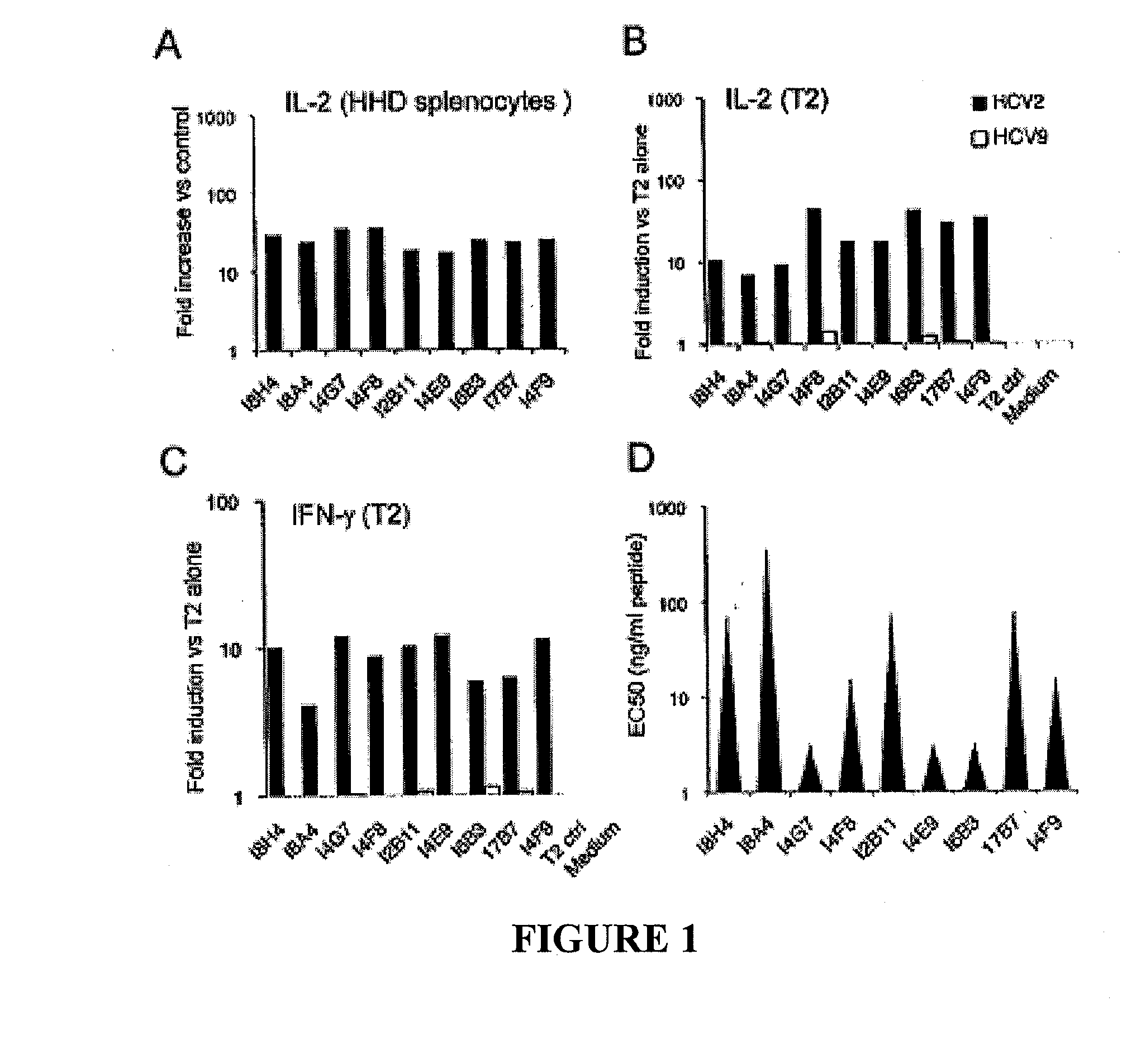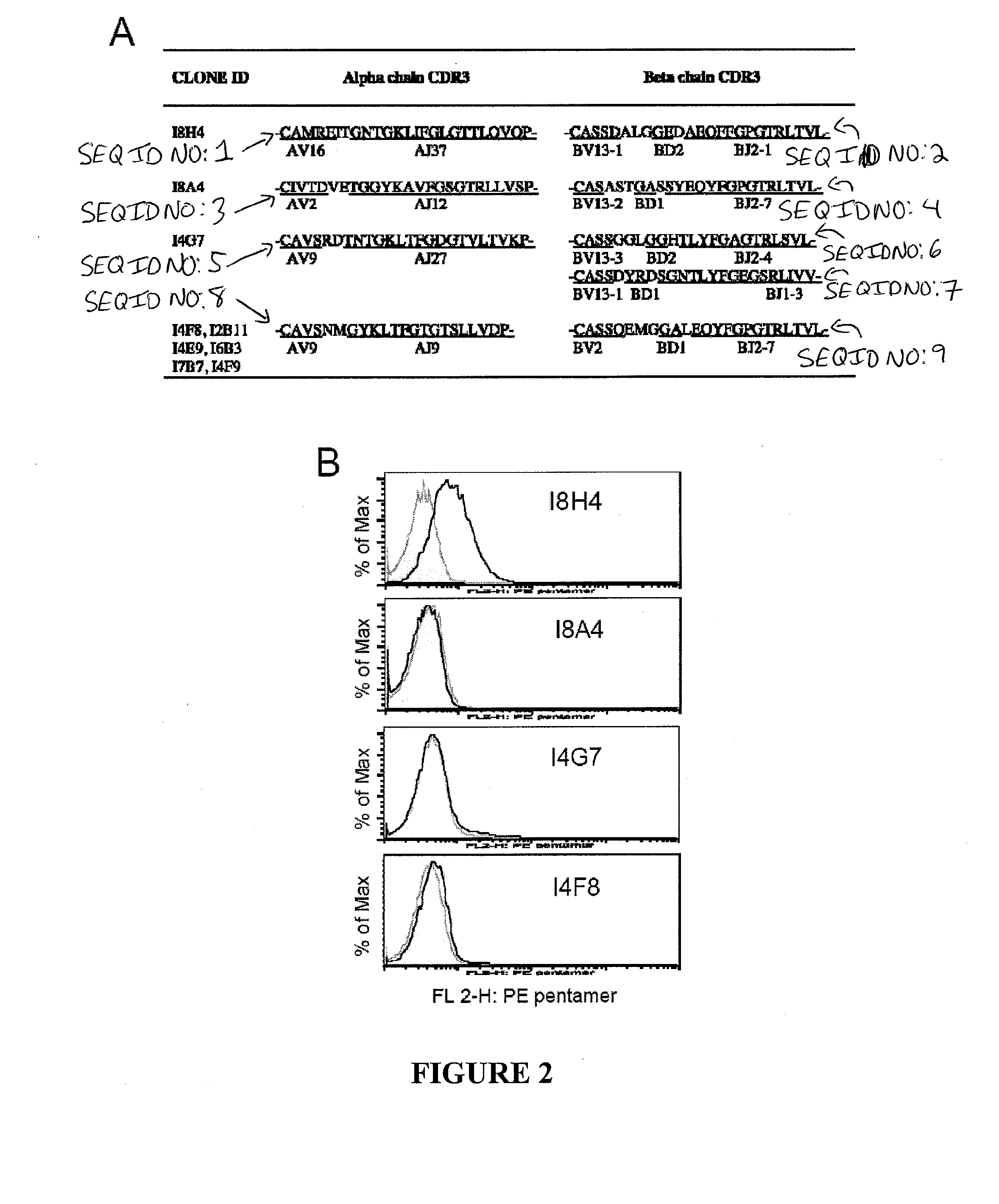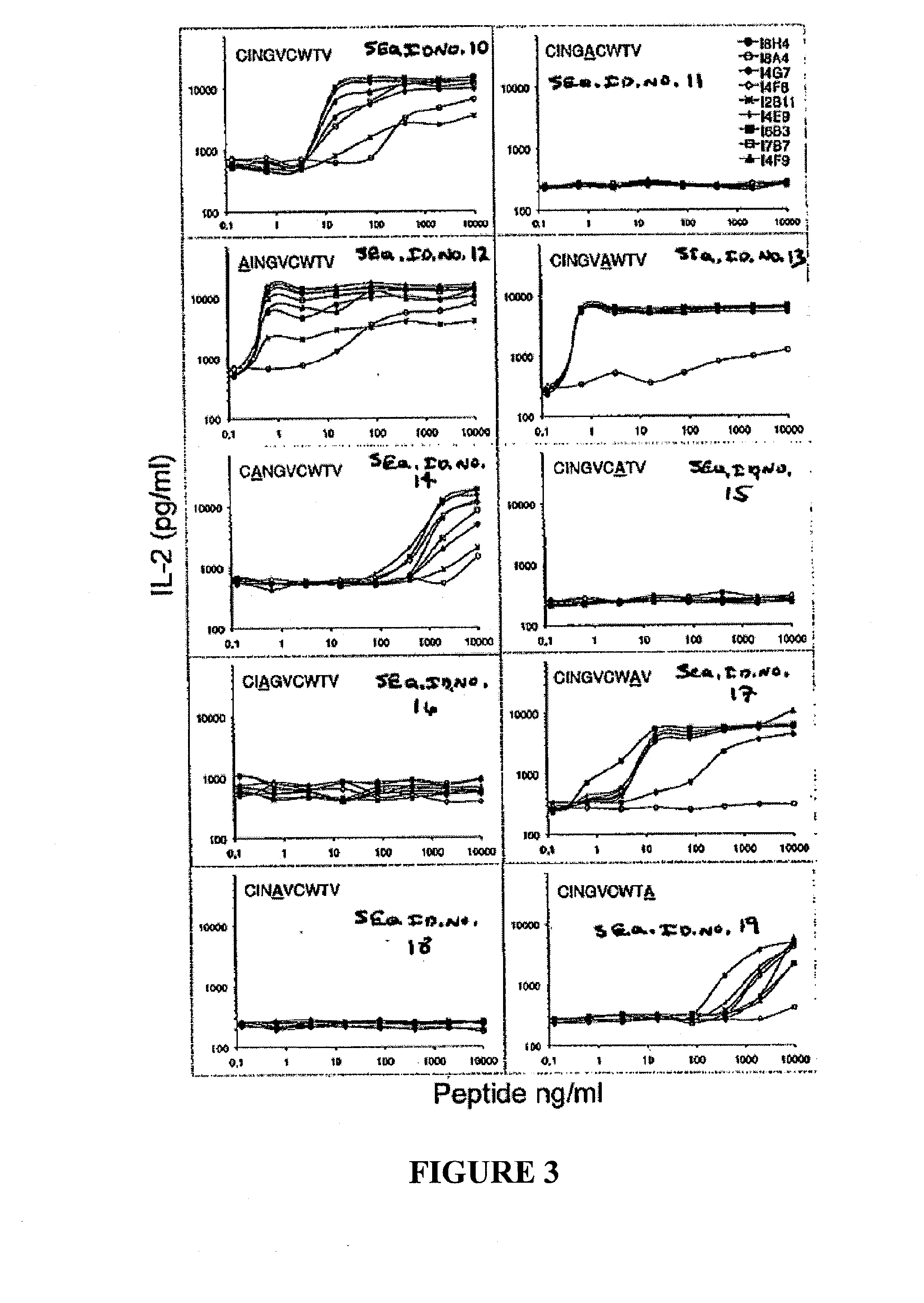T cell receptors specific for immunodominant ctl epitopes of hcv
a technology of ctl epitopes and t cell receptors, which is applied in the field of immunology, can solve the problems of long-term liver damage in the host, and achieve the effect of high efficiency and facilitation of production and isolation
- Summary
- Abstract
- Description
- Claims
- Application Information
AI Technical Summary
Benefits of technology
Problems solved by technology
Method used
Image
Examples
example 1
[0075]This Example describes some of the materials and methods used in the experiments discussed herein in greater detail.
[0076]Animals
[0077]Inbred HHD-C57 / BL6 (HHD+ H-2Db− / −β2m− / −) mice transgenic for HLA-A2.1 monochain histocompatibility class I molecule, and deficient for both H-2Db and murine β2-microglobulin (β2m) were kindly provided by Dr F Lemonnier, Institut Pasteur, France (35). HHD-C57 / BL6 mice were bred and maintained in-house (Karolinska Institutet, Karolinska University Hospital Huddinge, Stockholm, Sweden). The ethical committee for animal research at Karolinska Institutet had approved all animal experiments.
[0078]Plasmids and Synthetic Peptides
[0079]The DNA plasmid (pVax1-NS3 / 4A) containing the full-length codon optimized (co) NS3 / 4A gene in pVAX1 have been described previously. See Frelin, L. et al. (2004), Codon optimization and mRNA amplification effectively enhances the immunogenicity of the hepatitis C virus nonstructural 3 / 4A gene, Gene Ther 11:522-33. which is...
example 2
[0097]This example describes some of the experiments that were performed using the materials and methods set forth in Example 1 to discover the HCV-specific TCRs described herein.
[0098]Production and Functional Analysis of NS31073 Specific Hybridomas
[0099]By fusing NS31073 specific CD8+ T cells isolated from pVax-NS3-immunized HLA-A2 transgenic mice (HHD) with TCR− BW cells, nine stable HHD- restricted IL-2+ IFN-g+ T-cell hybridomas with specificity to the conserved human HLA-A2 restricted NS31073 CTL epitope were selected (TABLE 2). These immortalized hybridoma cell lines secreted up to nanograms of mouse IL-2 within 24 hours upon stimulation with NS31073 loaded HHD-spleenocytes (FIG. 1A). The overnight IL-2 production ranged from 17 to 34 fold over the non-peptide control targets (3000-5000 pg / ml vs <150 pg / ml). The reactivity is CD8-independent since BW-derived hybridomas lack the CD8 co-factor. See Rock, K. L., et al. (1990) Generation of class I MHC-restricted T-T hybridomas, J...
example 3
[0115]This example describes some of the experiments that were performed to discover the HCV-specific TCRs for NS5 peptides.
[0116]Human HLA (HHD) transgenic mice were immunized with a DNA construct encoding NS5 1992-2000 (SEQ ID NO: 117). The DNA immunization was performed as described in Example 1. Spleencocytes are removed from the immunized transgenic mice fused with TCR−BW cells so as to generate immortalized hybridomas. Hybridomas were selected that showed CD3 expression, as well as IL-2 and IFN-g secretion above a threshold level when exposed to NS51992. The selected hybridomas were expanded and poly A+ RNA that encodes the desired TCRs are extracted, purified and cDNA were generated therefrom by RTPCR. The cDNA was then sequenced and cloned as described in Example 1 to obtain VA and VB chain sequences for two receptors: TCR-19 (SEQ ID NO: 88 and SEQ ID NO: 89) and TCR-69 (SEQ ID NO: 96 and SEQ ID NO: 97). Unique CDR3 coding regions were found in the clones: TCR-19 (SEQ ID NO:...
PUM
| Property | Measurement | Unit |
|---|---|---|
| concentration | aaaaa | aaaaa |
| concentration | aaaaa | aaaaa |
| concentration | aaaaa | aaaaa |
Abstract
Description
Claims
Application Information
 Login to View More
Login to View More - R&D
- Intellectual Property
- Life Sciences
- Materials
- Tech Scout
- Unparalleled Data Quality
- Higher Quality Content
- 60% Fewer Hallucinations
Browse by: Latest US Patents, China's latest patents, Technical Efficacy Thesaurus, Application Domain, Technology Topic, Popular Technical Reports.
© 2025 PatSnap. All rights reserved.Legal|Privacy policy|Modern Slavery Act Transparency Statement|Sitemap|About US| Contact US: help@patsnap.com



